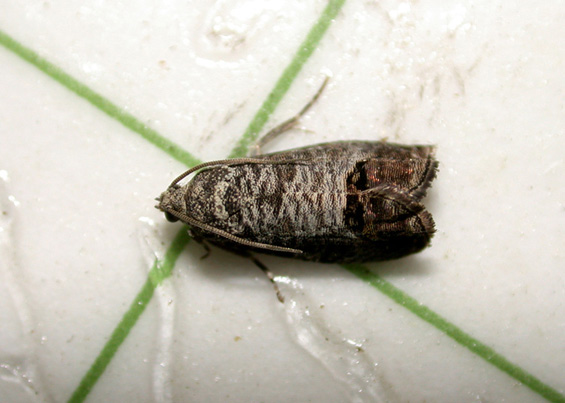
Common Name: Codling moth
Scientific Name: Tortricidae: Cydia pomonella
Status: pest of fruits and nuts
Damaging Stage: caterpillar
Biology: Codling moth adults are approximately � inch long with mottled gray wings that are held tentlike over their bodies. They can be distinguished from other moths by a dark, copper-brown band at the tips of their wings. Codling moth larvae are pink or white with a brown head capsule and are approximately � inch long.
Adults emerge in late spring and lay eggs on fruit, nuts, leaves, and spurs. The eggs hatch within two weeks, and the larvae bore into and feed inside the fruit of their host tree. After they complete development, the larvae drop from the trees to find pupation sites in the soil. There are two to three generations per year.
Injury: Larvae typically tunnel to the core of the fruit. The tunnel entrances are surrounded with red-brown, crumbly, frass deposits. Infested fruit is considered �wormy� and unfit for human consumption.
Action Threshold: Pheromone traps can be used to monitor codling moth activity. Trees should be treated when five or more adult moths are captured in baited traps that sample an area of five to ten acres.
Management: Some biological controls can help lower a population initially but they cannot effectively suppress a severe codling moth infestation. Chemical controls are usually the best option in these situations. Proper timing of pesticide applications is critical for effective codling moth control.
|